Industry Braces for Increased Volumes, Lower-Margin Vehicles

It’s a little early in the year to say anything definitive about 2022 vehicle volumes, however, the automotive industry has been signaling that production numbers should begin to rise in the coming months. While that sentence should be cause for a sigh of relief, there are parts of the industry that might not feel as good about it as you probably do.
With supply chain problems having drastically limited vehicle production during the pandemic, many dealers opted to price their goods well above anything that could be considered normal. This worked out poorly for many of the smaller outfits as larger retailers enjoyed record-breaking profits in 2021. Some manufacturers also benefited financially, as the chip shortage allowed them to prioritize their highest-margin products. Unfortunately for them, 2022 is likely to bring affordable vehicles back into play and gradually pull pricing closer to something approaching normality.
Domestic manufacturers have actually been leaning into higher-margin vehicles for quite some time. General Motors, Ford Motor Co., and Fiat Chrysler Automobiles (now Stellantis) all spent the last decade removing sedans and economy cars from U.S. assembly lines to make room for crossovers and SUVs yielding higher price tags and better profits. But now they’re confronting a market that just spent the last year taking advantage of people in dire need of a new automobile (or simply too dumb to realize they were overpaying), continually rising production costs, a customer base that has less disposable income than it did two years earlier, and fuel prices that might make people think twice about buying anything too large.
Bloomberg recently extrapolated the implications of this for General Motors in a recent article, concluding that it might not even be in the automaker’s best interest to resume building economy-minded vehicles. This might sound counterintuitive considering last year’s stalled volumes allowed Toyota to take the U.S. sales crown from GM. But Chief Financial Officer Paul Jacobson has already told the public that the company expects noteworthy production gains (estimating a 25 percent YOY increase in the first quarter), adding that the bump also means higher input costs and lower margins that could negatively impact overall profitability.
From Bloomberg:
The Detroit-based automaker is “seeing sizable supply chain pressure on commodities,” Jacobson said.
GM expects 2022 earnings roughly in line with the year just ended. The company forecasts adjusted earnings before interest and taxes of $13 billion to $15 billion in 2022 and adjusted earnings per share of $6.25 to $7.25. That compares $14.3 billion in adjusted earnings last year and $7.07 a share.
“With an improving outlook for semiconductors in the U.S. and China, we expect our 2022 results will remain strong,” Chief Executive Officer Mary Barra said in a letter to shareholders.
Shares of the carmaker rose 2.1 [percent] in premarket trading, building on Tuesday’s gains of 2.5 [percent] following the earnings announcement. The stock is down 7.8 [percent] this year.
Barra told reporters on a call that GM expects to benefit from pent-up demand on the order of several million vehicles in the U.S. alone, something she said will likely keep retail prices elevated.
Helping the cause is the $13,600 Chevrolet Spark that the manufacturer has decided to kill off in the summer. The sacrificial lamb is basic transportation and the cheapest General Motors had in its whole roster. That honor will now go to the $21,400 Chevy Trax crossover, which I would argue doesn’t compare all that favorably. But GM can get better margins with the Trax — and that’s the whole point.
Expect other manufacturers who’ve ditched a responsibly varied lineup to go crossover and pickup crazy to engage in similar behaviors. While the industry-wide transition toward EVs will also come into play, truly affordable all-electric options won’t be available for a few more years.
As for dealers, most have remained confident that elevated vehicle pricing will persist well into 2022 and ensure continued profitability. However, we can’t really say how things will look by autumn. Consumers might begin seeing if they can wait things out until prices decline and lots are fuller and we’ve no real idea when the semiconductor shortage will dissipate. We’ve heard the industry repeatedly suggest it’s going into its closing act over the last few months. But that’s also what we were told at the start of 2021.
The National Automobile Dealers Association (NADA) currently believes that light-vehicle inventories will continue to be strained throughout 2022. While NADA leadership has said it believes volumes will improve, it doesn’t anticipate production to be anywhere near levels witnessed before the pandemic and is assuming it can keep pricing unreasonably high until at least 2023.
[Image: Phil K/Shutterstock]

A staunch consumer advocate tracking industry trends and regulation. Before joining TTAC, Matt spent a decade working for marketing and research firms based in NYC. Clients included several of the world’s largest automakers, global tire brands, and aftermarket part suppliers. Dissatisfied with the corporate world and resentful of having to wear suits everyday, he pivoted to writing about cars. Since then, that man has become an ardent supporter of the right-to-repair movement, been interviewed on the auto industry by national radio broadcasts, driven more rental cars than anyone ever should, participated in amateur rallying events, and received the requisite minimum training as sanctioned by the SCCA. Handy with a wrench, Matt grew up surrounded by Detroit auto workers and managed to get a pizza delivery job before he was legally eligible. He later found himself driving box trucks through Manhattan, guaranteeing future sympathy for actual truckers. He continues to conduct research pertaining to the automotive sector as an independent contractor and has since moved back to his native Michigan, closer to where the cars are born. A contrarian, Matt claims to prefer understeer — stating that front and all-wheel drive vehicles cater best to his driving style.
More by Matt Posky
Latest Car Reviews
Read moreLatest Product Reviews
Read moreRecent Comments
- W Conrad I'm not afraid of them, but they aren't needed for everyone or everywhere. Long haul and highway driving sure, but in the city, nope.
- Jalop1991 In a manner similar to PHEV being the correct answer, I declare RPVs to be the correct answer here.We're doing it with certain aircraft; why not with cars on the ground, using hardware and tools like Telsa's "FSD" or GM's "SuperCruise" as the base?Take the local Uber driver out of the car, and put him in a professional centralized environment from where he drives me around. The system and the individual car can have awareness as well as gates, but he's responsible for the driving.Put the tech into my car, and let me buy it as needed. I need someone else to drive me home; hit the button and voila, I've hired a driver for the moment. I don't want to drive 11 hours to my vacation spot; hire the remote pilot for that. When I get there, I have my car and he's still at his normal location, piloting cars for other people.The system would allow for driver rest period, like what's required for truckers, so I might end up with multiple people driving me to the coast. I don't care. And they don't have to be physically with me, therefore they can be way cheaper.Charge taxi-type per-mile rates. For long drives, offer per-trip rates. Offer subscriptions, including miles/hours. Whatever.(And for grins, dress the remote pilots all as Johnnie.)Start this out with big rigs. Take the trucker away from the long haul driving, and let him be there for emergencies and the short haul parts of the trip.And in a manner similar to PHEVs being discredited, I fully expect to be razzed for this brilliant idea (not unlike how Alan Kay wasn't recognized until many many years later for his Dynabook vision).
- B-BodyBuick84 Not afraid of AV's as I highly doubt they will ever be %100 viable for our roads. Stop-and-go downtown city or rush hour highway traffic? I can see that, but otherwise there's simply too many variables. Bad weather conditions, faded road lines or markings, reflective surfaces with glare, etc. There's also the issue of cultural norms. About a decade ago there was actually an online test called 'The Morality Machine' one could do online where you were in control of an AV and choose what action to take when a crash was inevitable. I think something like 2.5 million people across the world participated? For example, do you hit and most likely kill the elderly couple strolling across the crosswalk or crash the vehicle into a cement barrier and almost certainly cause the death of the vehicle occupants? What if it's a parent and child? In N. America 98% of people choose to hit the elderly couple and save themselves while in Asia, the exact opposite happened where 98% choose to hit the parent and child. Why? Cultural differences. Asia puts a lot of emphasis on respecting their elderly while N. America has a culture of 'save/ protect the children'. Are these AV's going to respect that culture? Is a VW Jetta or Buick Envision AV going to have different programming depending on whether it's sold in Canada or Taiwan? how's that going to effect legislation and legal battles when a crash inevitibly does happen? These are the true barriers to mass AV adoption, and in the 10 years since that test came out, there has been zero answers or progress on this matter. So no, I'm not afraid of AV's simply because with the exception of a few specific situations, most avenues are going to prove to be a dead-end for automakers.
- Mike Bradley Autonomous cars were developed in Silicon Valley. For new products there, the standard business plan is to put a barely-functioning product on the market right away and wait for the early-adopter customers to find the flaws. That's exactly what's happened. Detroit's plan is pretty much the opposite, but Detroit isn't developing this product. That's why dealers, for instance, haven't been trained in the cars.
- Dartman https://apnews.com/article/artificial-intelligence-fighter-jets-air-force-6a1100c96a73ca9b7f41cbd6a2753fdaAutonomous/Ai is here now. The question is implementation and acceptance.





















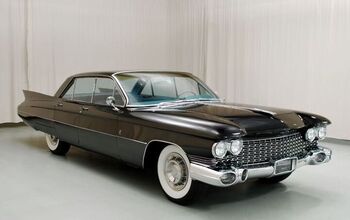
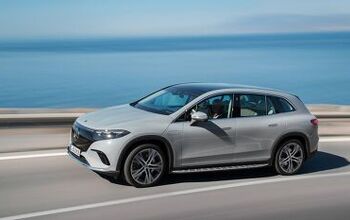

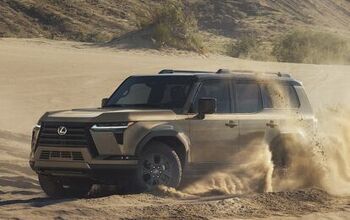
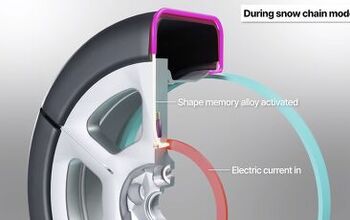
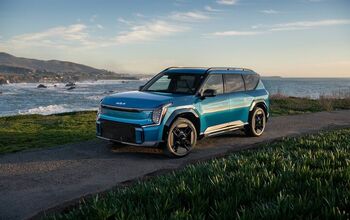


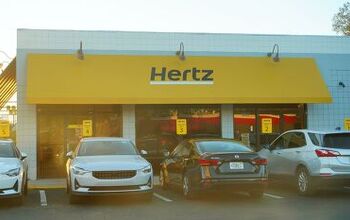
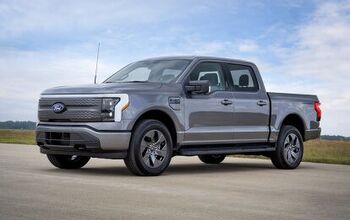
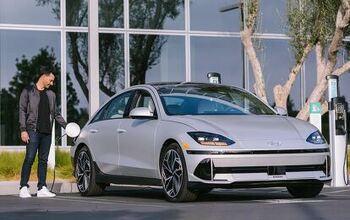
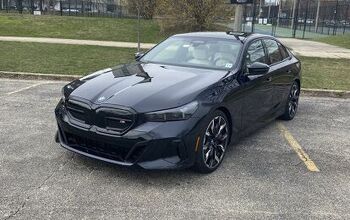
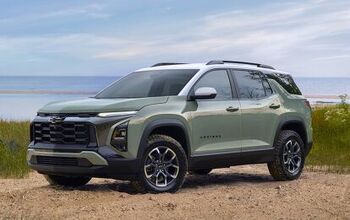
Comments
Join the conversation
If the current market doesn't re-price and supply adjust by summer, we could see many who need to buy move down a segment. But the prices definitely are discouraging many and removing people who would normally be in market. I'm also not sure how much higher the 12 year median fleet age can go.
Occam's Razor-the simplest solutions are usually the best. Recessed tie down bolts to me sound like a better idea. The magnets would probably work on relatively small objects but in the case of large heavy objects like a refrigerator or a water heater you would probably need tie downs as well.